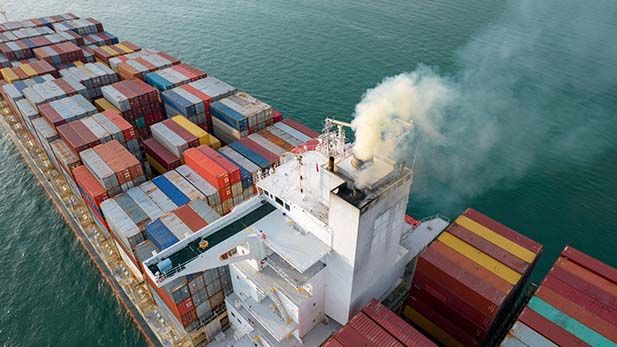Investors are blindfolded in terms of sustainability when they invest in shipping

The financial sector and the big pension funds are de facto blindfolded when they invest in the maritime sector in terms of the harm the industry causes the environment by way of emissions, including sulphur, nitrogen oxides and other particles. A new tool developed by a consortium of actors, including Copenhagen Business School, has the potential to make a change.
“Currently the investors only have access to limited Sustainable Development Goal data on the potential pollution caused by ships manoeuvring in protected maritime areas. They have almost no clue as to the risks they are taking in terms of harming living creatures, sea water quality and the environment in general,” states Associate Professor Kristjan Jespersen from Copenhagen Business School.
This presents the investors with a major problem because according to EU law, i.e. the EU’s Sustainable Finance Disclosure Regulation, they are required to take these risks into account when investing their money.
Investors need data to act sustainable
“The directive states that managers must disclose how sustainability risks are included in their considerations during an investment process, what metrics they use to assess ESG factors, and their considerations concerning investment decisions that might result in negative effects in terms of sustainability factors. However, they do not have the data to fulfil this obligation,” Jespersen adds.
To help investors obey the law and hopefully lead the way towards a more sustainable maritime sector, CBS, the Green Digital Finance Alliance (GDFA) and WWF Denmark, supported by the Velux Foundation, have developed a proof of concept for a new metric for financial institutions in the Nordic countries.
This new tool can measure the level of risk shipping activities expose sensitive marine ecosystems to as well as CO2 emissions from individual vessels.
According to Rasmus Nørgaard, ESG Analyst at ATP, Denmark’s largest pension company, the tool makes it possible for stakeholders to better engage with companies:
“This tool will have an impact in creating transparency, which is very important in biodiversity as right now the lack of data is one of greatest barriers within biodiversity. So, this is one place where it will create impact and make it possible for stakeholders to engage with companies,” says Rasmus Nørgaard.
Tool helps measuring the level of risk
Overlaying environmental data with geolocated asset-level data and financial ownership data, the tool allows financial institutions to measure the level of risk the shipping activities in their portfolios expose marine protected areas and sensitive marine ecosystems to. Additionally, it highlights the CO2 emissions from vessels, once the ownership data linkage is established, thus allowing financial institutions to assess the risk individual assets pose to the health of oceans.
“The positive outcome of using this tool for the investors and financial sector would be to successfully identify and favour investments, which do not pose significant risks to ocean health, and engage with investees on improving their environmental standards and impact,” says Kristjan Jespersen.
For society the benefit would be a better understanding of climate and ocean risks, as well as an increase in investments which consider and manage these risks.
Contact
Associate Professor Kristjan Jespersen; Tel. +45 23966899; E-mail: kj.msc@cbs.dk
Journalist Marianne Bom; Tel. 45 41852631; E-mail: mb.slk@cbs.dk
Journalist Richard Steed; Tel. +45 41852205; E-mail: rs.slk@cbs.dk
